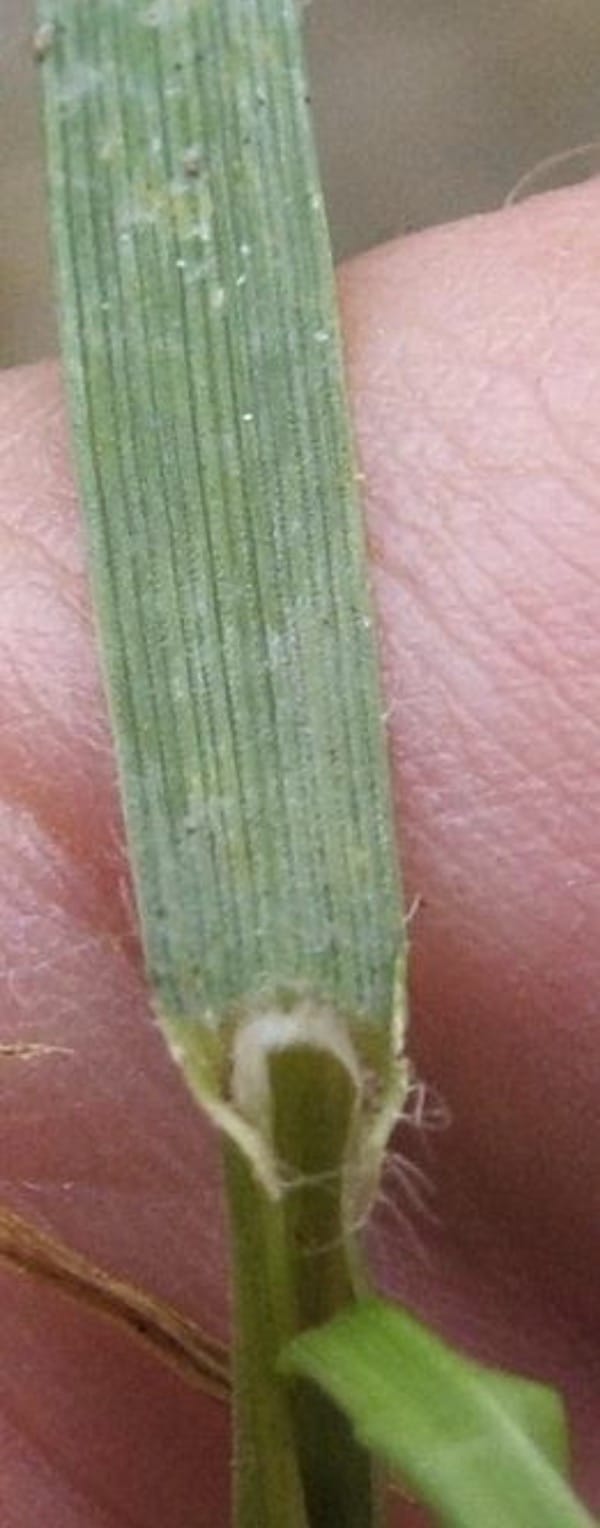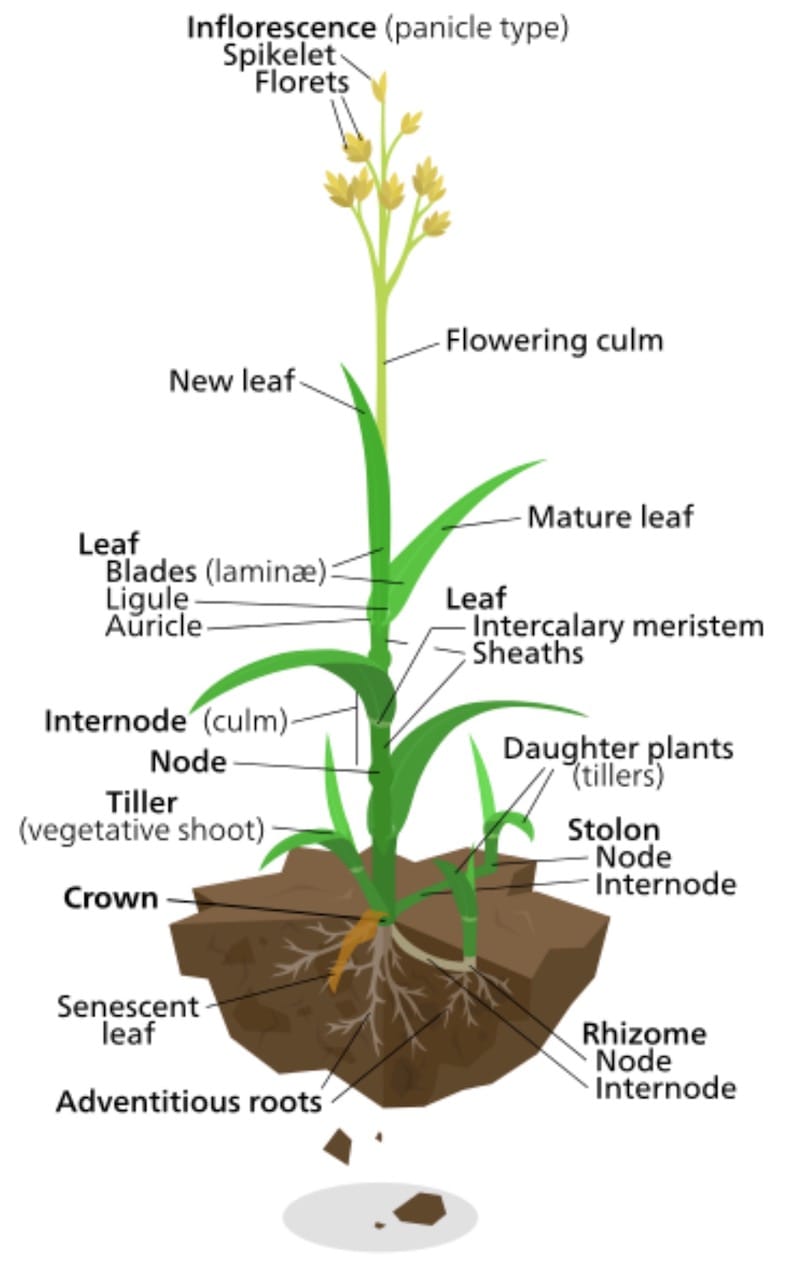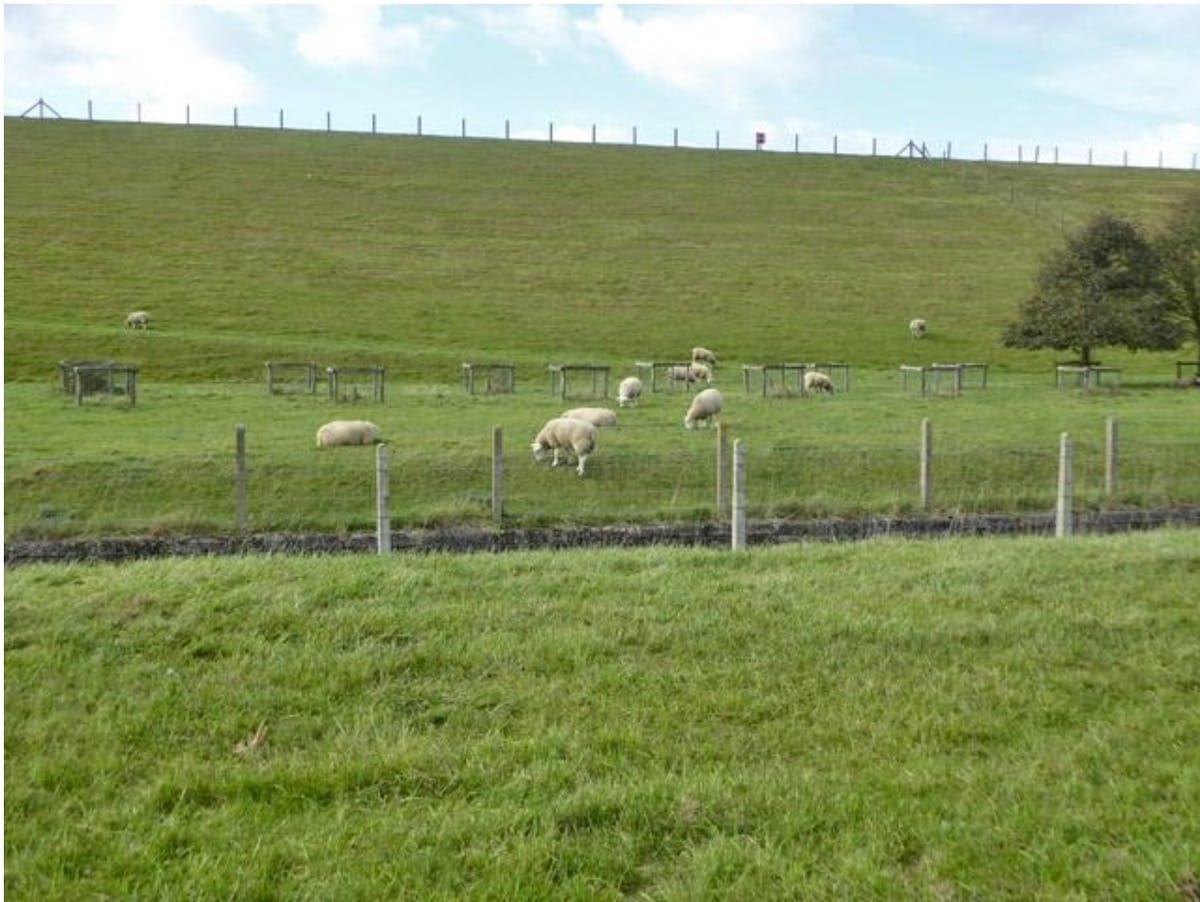Perennial ryegrass is the go-to pasture species for farmers like you, all over Australia, New Zealand, USA, UK and South Africa.
In this article, let’s talk about perennial ryegrass management, its different stages, and what you can do to maintain a bountiful pasture that’s poised for profit!
So let’s get started and discuss all the grazing management questions you may have.
What are the 5 stages of grazing management?
- Identification
- Leaf Stage
- Pre-grazing Stage
- Post-Grazing Residuals
- Tools
If you have the right questions at each stage of grazing management, it will seamlessly help you achieve your goals and maintain brilliant pastures. Let’s quickly run through what these questions are:
Identification: Is this actually perennial ryegrass?
Leaf Stage: At what leaf stage am I grazing my pastures in?
Pre-grazing stage: Is my rotation correct?
Post-grazing residuals: Am I achieving my post-grazing residuals targets?
Tools: Am I using the right combination of animal and pasture indicators to make the right decisions?
How to identify perennial ryegrass?
First, let’s talk about how to identify perennial ryegrass since many times, Poa and Italian ryegrass are often mistaken for perennial ryegrass.
The leaves are typically hairless with a well-defined mid-rib and a shiny surface underneath. The emerging leaves are usually folded. It has a reddish-purple base and the plants are made up of tillers.

Tillers have their own leaves and roots. They have 3 live leaves which grow from the base of the tiller. They can produce new tillers.
They have one leaf growing at a time. When the fourth leaf emerges, the oldest leaf dies. It has a life of about one year.
Spring and Autumn are the main periods of production of tillers, also known as tillering.
Tillers can be of two types – leafy (or vegetative) and reproductive. A reproductive tiller can be identified by feeling the nodes on the stem.
When tillers become reproductive, the stem elongates. If the tiller isn’t grazed during this period, a seed-head is produced.
To summarise:
- Stems: 30 – 90 cm
- Leaves: Fine leaves of about 7 mm. Dark green, shiny under surface, folded blades and a purplish-red leaf base.
- Seedhead: Spike is about 20 cm, spikelet usually < 10 florets.
- Seeds: Fawn colored, flat, awnless. About 6 mm. 520,000/kg (diploid cvv) or 350,000/kg (tetraploid cvv)
Leaf Stage:

The leaf stage is determined by the number of leaves per tiller.
Leaf stage can be used to identify the best time for paddock to be grazed.
It also is an indicator of the tillers energy status and the ability to recover after grazing.
The leaf stage is measured only on the leafy tillers.
- Graze between 2-3 leaf stages of regrowth to optimize production of high quality pasture.
- Grazing may occur right before the 2-leaf stage when the demand per hectare is low, or when moving into a surplus.
After the 3-leaf stage, the oldest leaves die.
This causes wastage and the quality of the feed declines as the dead material builds up.
Here’s how you calculate the leaf stage:
- First, choose a perennial ryegrass tiller
- Then, make sure the tiller is vegetative (leafy, not reproductive)
- After that, check if the tiller has a remnant leaf. A remnant leaf is one that was grazed at the last grazing and has a very blunt tip. If there is more than one remnant leaf, just include the uppermost remnant leaf.
- Now, check how big the remnant leaf is, when compared to the leaf above it. If it is less than half the size, do not count it. If it is greater than half the size, you can count it as half.
- Next, check how many fully grown leaves with pointy tips are there. If there is 1 fully grown leaf with a pointy tip, count it as 1. If there are 2, count as 2 and so on.
- If the uppermost leaf is not fully grown, how big is it compared to the leaf below it? If it’s less than half the size, do not count it. If it is half the size, count it as half. And if it’s a full size, count it as 1.
- Repeat points 4, 5 and 6 for 10 tillers in total.
If pastures are at or nearing canopy closure, they need to be grazed or conserved, regardless of leaf stage.
But first, what is canopy closure?
Canopy closure is when the pasture canopy is so thick that you can’t even see the ground beneath it.
This means that sunlight can’t get to the base of the plant (daughter tillers) and this causes yellowing and death of leaves.
If canopy closure keeps happening, re-assess your nitrogen policy, make sure your target residuals are achieved and ensure that your rotation length is not too long.
Surplus can always be stored as hay or silage if needed.

Post Grazing Residuals:
Your post-grazing target residual should be 1500 – 1600 kg DM/ha or 4-6 cm.
How do you achieve this?
- By grazing at 2.5- 3 leaves and before canopy closure
- Allocation of supplement that matches the growth of pasture and cow demand
- Use corrective measures quickly, in the event that your target isn’t met
If your residual levels are below the target:
- There will be very little or almost no leaves left in the paddock
- There will be lots of bare ground and soil visible
- There will be little herbage remaining around the clumps and the clumps will not be obvious on the paddock
In the case of target residuals:
- There will be very little leaf remaining between the clumps
- The clumps will be small with a ‘sharp’ shape and will be distinct across the paddock
- The tops and sides of the clumps will be well eaten into
- The clumps will make up at least 15% of the total area
In the case of above target residuals:
- The area between the clumps will not be grazed well
- There will be a good quality grazeable leaf remaining
- The clumps are very large and rounded and some clumps are totally not grazed
- Little herabage is removed from the dung pads
- Clumps make up at least 30% of the area
If your target residuals aren’t met, you can always take the right measures immediately.
Some of these measure include:
- Select drier or cropping paddocks
- On/off grazing
- Graze lower pre-grazing yield
- Accept higher residuals at this grazing event
- Use back fencing to prevent pugging
- Effective use of gateways and races
- Subsequently, aim to promote tillering by setting and achieving pre-grazing yields and residuals by using nitrogen fertiliser
- Keep a record of wet or damaged paddocks
- Do not let successive pugging events happen in individual paddocks

We started off this article by telling you that you need to have some set questions asked and answered for each stage of your grazing management.
And now, we end the article in the same way!
Questions are an important tool to help you achieve your targets.
And the more ticks (yes’s) you are able to get for the below questions, the more on track you are.
You can even print this out and keep it handy at your desk. Makes this exercise quite fun, doesn’t it?
| Stage | Description | Tick or Cross |
|---|---|---|
| Pre-grazing | ||
| Current leaf stage | 2-3 per tiller | |
| Has canopy closure happened? | No ground is seen | |
| Post-grazing | ||
| Overall height | 4-6 cms | |
| Grazing of clumps | Small and sharp | |
| Grazeable leaf remaining | Very little, between clumps | |
| Wastage of supplement? | None | |
| Pasture quality | ||
| Regrowth & quality at grazing | Max. regrowth & quality | |
| Cow's mood | ||
| When entering paddock | Graze quietly | |
| When leaving paddock | Exit with no rush | |
| Cow performance | ||
| Pasture production optimsed | Hitting target growth | |
| Total No. of ticks: |
In short, the 3030 Project reinforced three basic strategies:
- Graze between stage 2 and 3 leaf stage prior to canopy closure
- Leave post grazing residual of 4 -6 cms
- Maintain green leaf cover all through the year
4 basic perennial ryegrass management practices are:
- Set rotation length in relation the LER – Leaf Emergence Rate and monitor it
- Choose paddocks to graze. Assess pre-grazing cover
- Adjust supplementation and close for conservation to achieve target rotation length and post-grazing residuals
- Make adjustments to the grazing area to achieve your targets
Please check out Pasture.io to see the different ways in which we can help you with your pasture – on autopilot mode! We can take care of all the nitty-gritties.
So, focus on your farming, and position your pasture for profit.
Happy Farming!
- The Dedicated Team of Pasture.io, 2020-09-07